Taxidermy4Cash.com
Taxidermy and the effort involved in creating a case.
We are always very interested in Purchasing Victorian Taxidermy, please respond via this on-line form of what you have for sale. HERE
We get asked to recommend Bird Taxidermists in the UK and America. This taxidermist produces modern creations utlising many of the design features and case building techniques created by the Victorian Taxidermists. This taxidermy art form has changed little over the years. Preservation techniques in terms of the use of chemicals has changed and groundwork has become more realistic. Apart from that the taxidermy techniques used 150 years ago are still relevant today.
We have always been interested in creating dioramas, with nest eggs and chicks and to also closely match the birds that associate together and also near as possible the habitat in which they would be likely to be found.
The case that is outlined below demonstrates the stages involved the choice of landscape, colours, materials and of course the choice of mounts. The duck indicated here is a North Atlantic Long tailed Duck ,North American but also a common to the UK.
The taxidermy has been undertaken, with a bird that has been legally obtained. The styrafoam rockwork to 15-20 coats of paint to create both texture and depth. The resin required 6-10 applications for the same reason, allowing each application to dry prior to the next coat. Each stone is hand painted and then varnished to create a wet look. The bird, well taxidermists will know what they take to create, then of course there is the cabinet work and galzing. Clearly some people spend more time on cases and mounts than others.
North Atlantic Long tailed Duck (Clangula hyemalis).
Formerly known as Oldsquaw, the Long-tailed Duck breeds in the Arctic and winters along both coasts of North America. It is distinctive among ducks in plumage, molt sequences, foraging behavior, and vocalizations.
Male has very long black central tail feathers and is cleanly marked black-and-white. Female has short tail and is patterned in smudgy black, white, and brown. Male's bill often has a pink band near the tip; female's bill is uniformly dark gray.
The Long-tailed Duck is one of the deepest diving ducks, and can dive as deep as 60 meters (200 feet) to forage.
Of all diving ducks, the Long-tailed Duck spends the most time under water relative to time on the surface. When it is foraging it is submerged three to four times as much as it is on top of the water.
Unlike most ducks, which molt twice per year, the Long-tailed Duck has three distinct plumages each year, achieved in a complex series of overlapping partial molts. The Definitive Basic Plumage is never worn in its entirety, as portions of Alternate are retained through the summer and elements of the Supplemental are acquired before all of Basic Plumage is obtained. Therefore change in plumage seems continuous from April to October.
Unlike other waterfowl, the Long-tailed Duck wears its "breeding" or Alternate Plumage only in the winter. It gets its "nonbreeding" or Basic Plumage in the spring and wears it for the breeding season. Most other ducks wear the nonbreeding plumage only for a short period in the late summer.
The concept
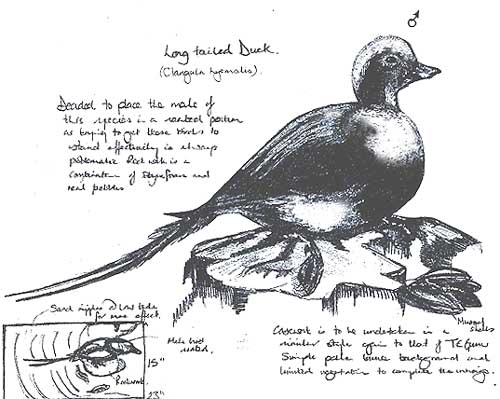
North Atlantic Long tailed Duck drawing as the concept for this case.
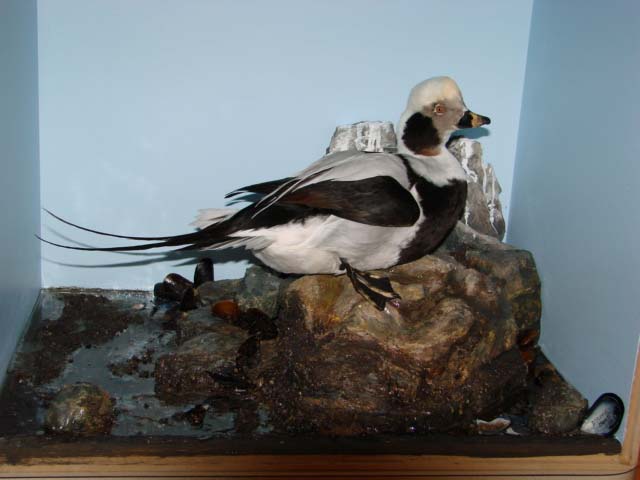
North Atlantic Long tailed Duck. The casework is completed complete with flooded areas of the case to simulate low tide
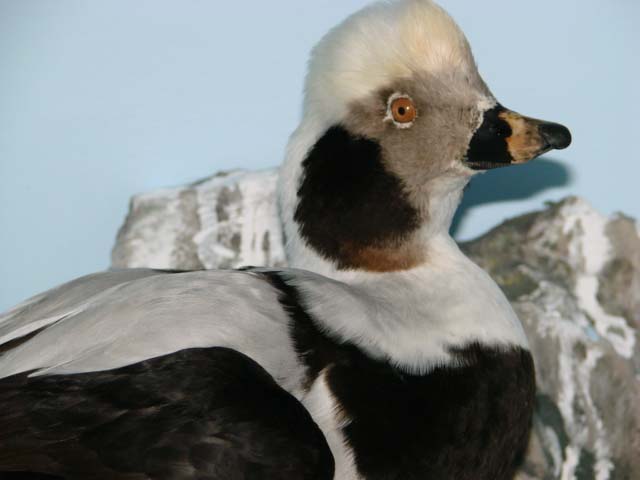 Close up of the above case to show the attention to detail.
Close up of the above case to show the attention to detail.
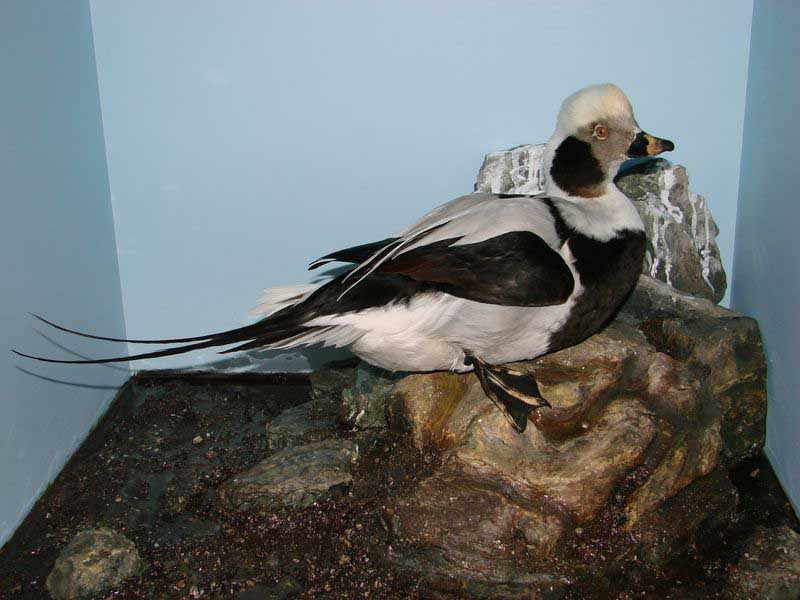
North Atlantic Long tailed Duck. This case is near completion, just some more resin and groundwork to do and to paint the birds feet and bill.
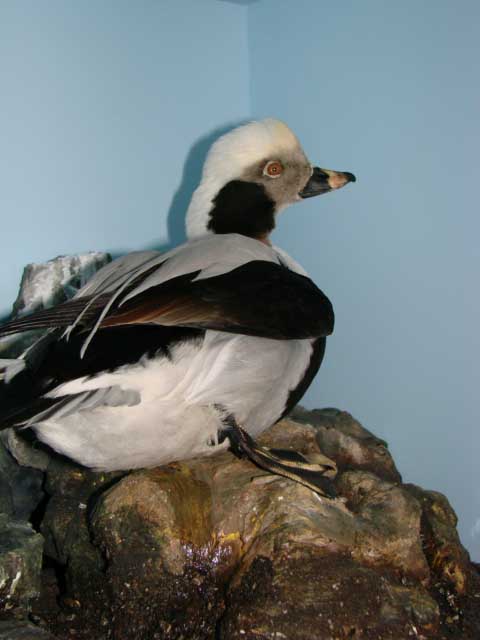
North Atlantic Long tailed Duck. This case is near completion, just some more resin and groundwork to do and to paint the birds feet and bill.
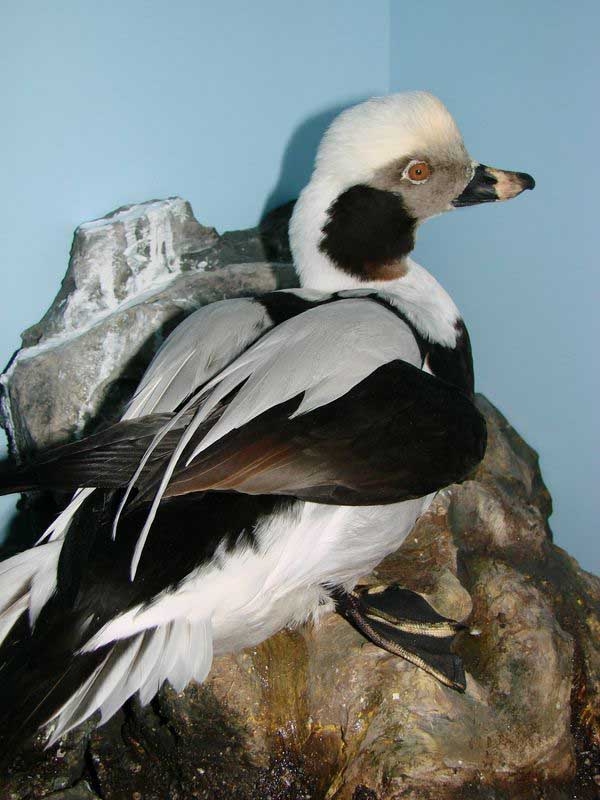
North Atlantic Long tailed Duck. This case is near completion, just some more resin and groundwork to do and to paint the birds feet and bill.
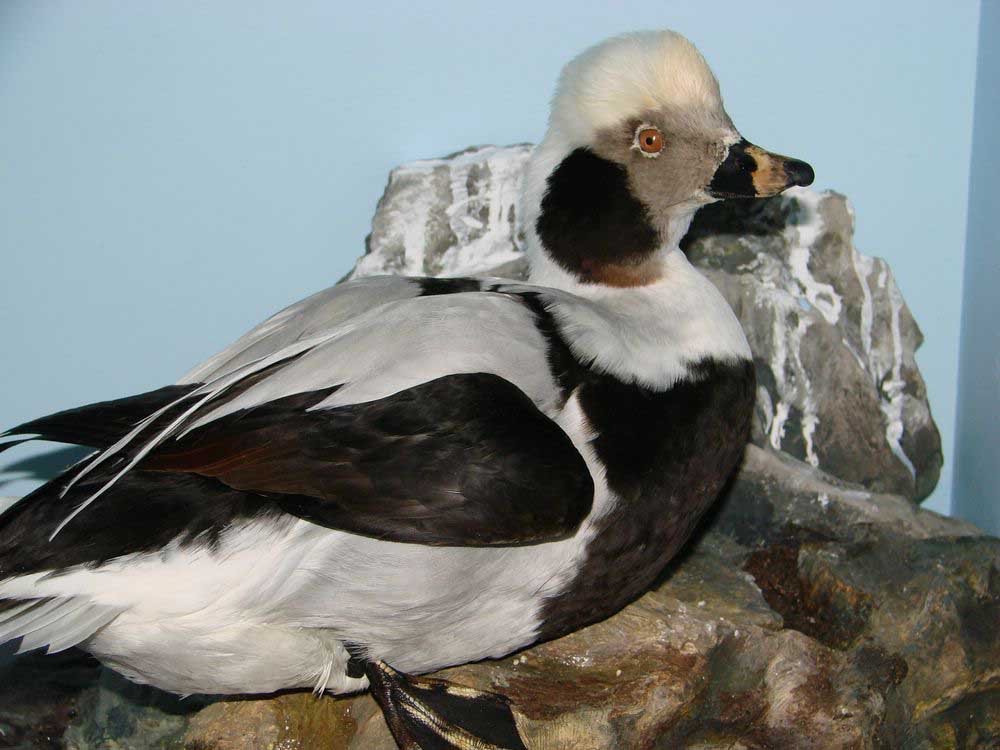
North Atlantic Long tailed Duck. This case is near completion, just some more resin and groundwork to do and to paint the birds feet and bill.
![DSC_5027[1].jpg](DSC_5027[1].jpg)
North Atlantic Long tailed Duck. This is the completed version of the mount, being left to dry. The foot still needs painting as does the bill and the feathers will require final adjustment prior to casing the specimen. This is a male bird in winter plumage. The bird will be allowed to dry with the pins in place for about 7-10 days. By then the skin would have “fixed” itself to the desired position. The mount should be observed periodically for signs of shrinkage and where appropriate re-injected / hydrated with water to allow for re-adjustment to the mount and re-pinned. Reference images play a crucial role at this point to ensure accuracy of the finished specimen.
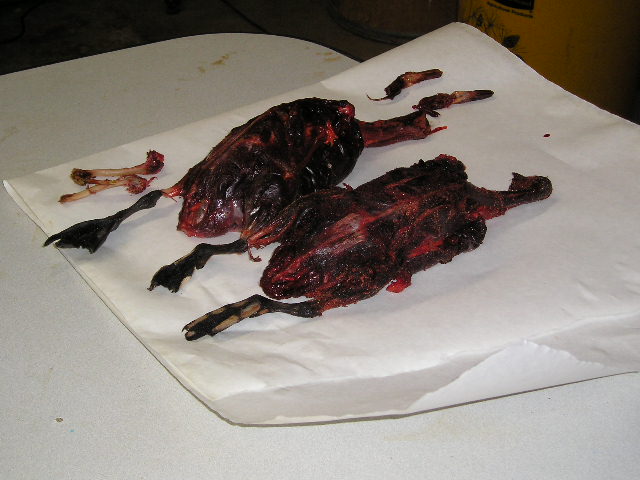
North Atlantic Long tailed Duck. The carcass of the long tailed duck can be seen on the right of this picture. The bird to the left is a Harlequin duck. These are used as reference when considering the creation of forms and neck width and length.
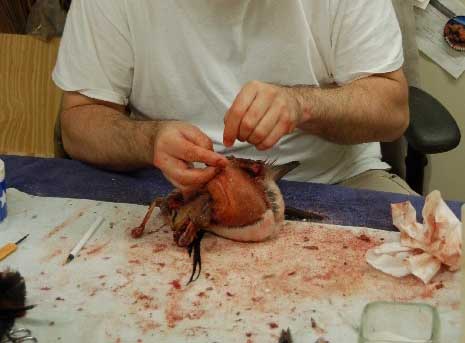
North Atlantic Long tailed Duck. Initial skinning process the carcass has been removed from the body and the skin is examined for holes, tears and imperfection that may result in a poor mount further along in the process.
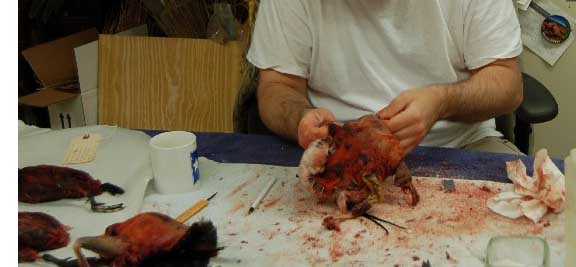
North Atlantic Long tailed Duck. Final review of the skin before it goes for fleshing and washing.
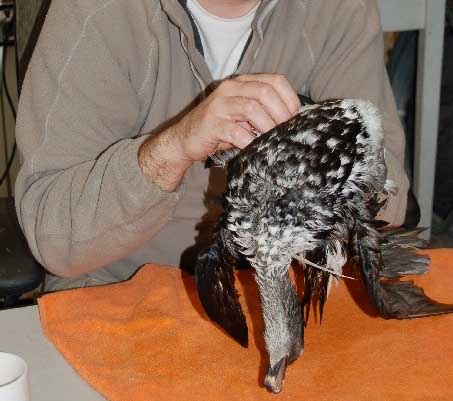
North Atlantic Long tailed Duck. The bird has been washed and fleshed at least 4 times to ensure that the fat has been removed from the feather tracts.
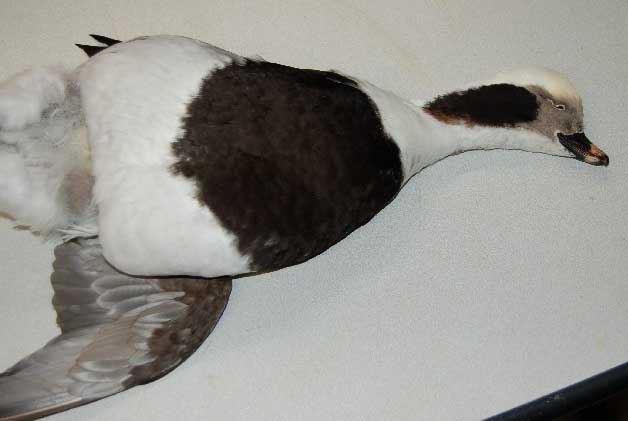
North Atlantic Long tailed Duck. In this image you can clearly see the “case incision”. The incision was decided upon as the bird’s legs were broken and therefore it was felt better to remove them from the carcass to allow for easier access into this area. The bird at this stage has been fleshed and washed.
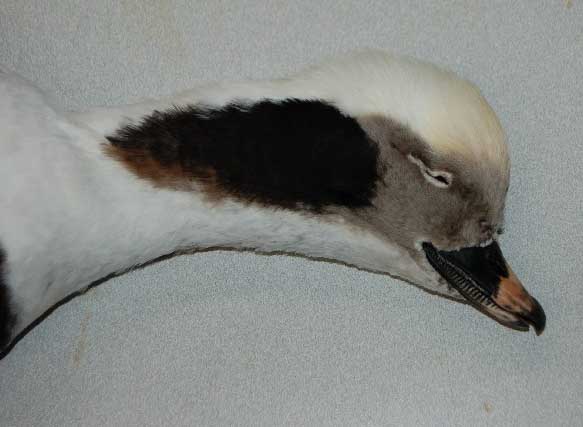
North Atlantic Long tailed Duck. Close up of the fleshed birds head after washing and drying
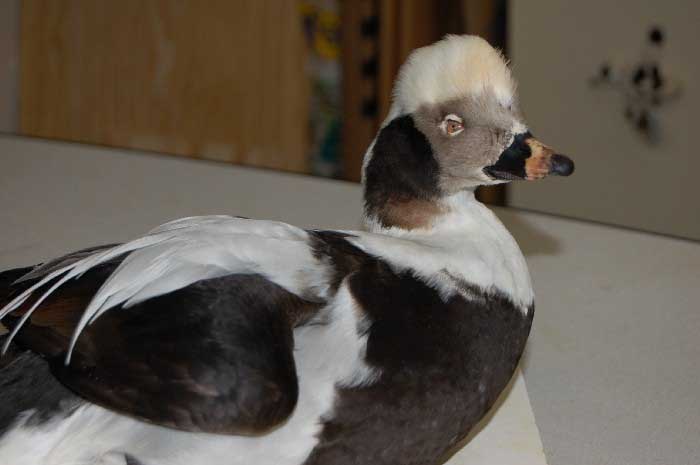
North Atlantic Long tailed Duck. The bird has had the form inserted, “caulked” and leg, wing and neck wired attached. The eyes have been placed into the skull. The bird has been placed upon a stand in an initial relaxed pose before deciding on the best way to treat this duck. It was originally suggested that the bird should be swimming but ultimately decided that it would be placed upon a rock beside the water. The case incision has also been sewn up and the foot wire attached.
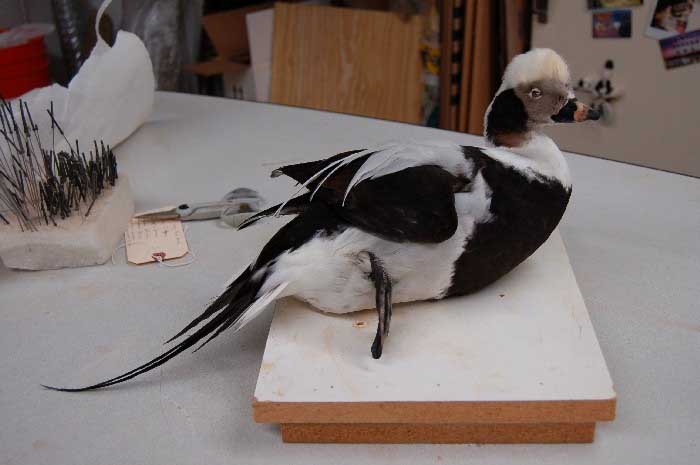
North Atlantic Long tailed Duck.
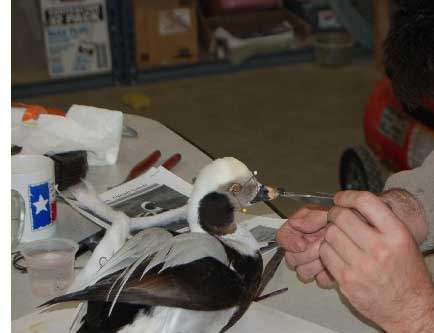
North Atlantic Long tailed Duck. Attention given to the correct placement of the eyes as seen in the image. Wool inserted into fill out the cheek and neck area of the bird to give it more a lifelike look. Pins have been inserted to prevent shrinkage and the tail feathers taped to allow drying in the desired position. Looking at reference images of live birds the tail curls upwards and is lifted slightly. Therefore the “t” pin has been inserted higher than normal to facilitate this attitude of the live bird. We recommend that lots of reference images are used to convey animation of the subject specimen. Otherwise your mount will look still and un-natural, as so often encountered.
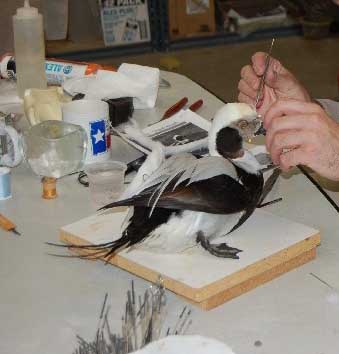
North Atlantic Long tailed Duck.
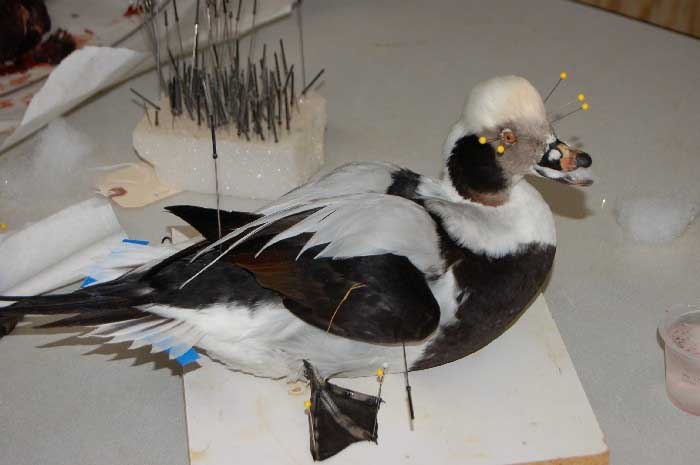
North Atlantic Long tailed Duck.North Atlantic Long tailed Duck. Attention given to the correct placement of the eyes as seen in the image. Wool inserted into fill out the cheek and neck area of the bird to give it more a lifelike look. Pins have been inserted to prevent shrinkage and the tail feathers taped to allow drying in the desired position. Looking at reference images of live birds the tail curls upwards and is lifted slightly. Therefore the “t” pin has been inserted higher than normal to facilitate this attitude of the live bird. We recommend that lots of reference images are used to convey animation of the subject specimen. Otherwise your mount will look still and un-natural, as so often encountered.
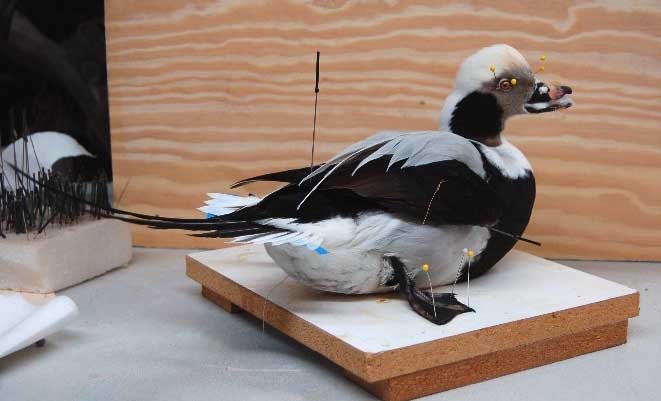
North Atlantic Long tailed Duck.
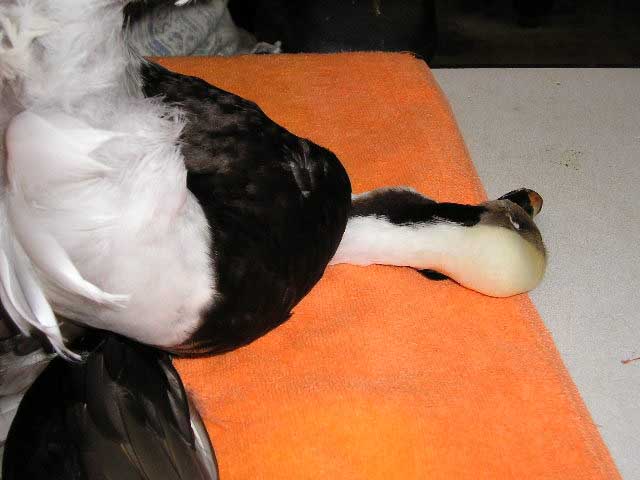
North Atlantic Long tailed Duck.
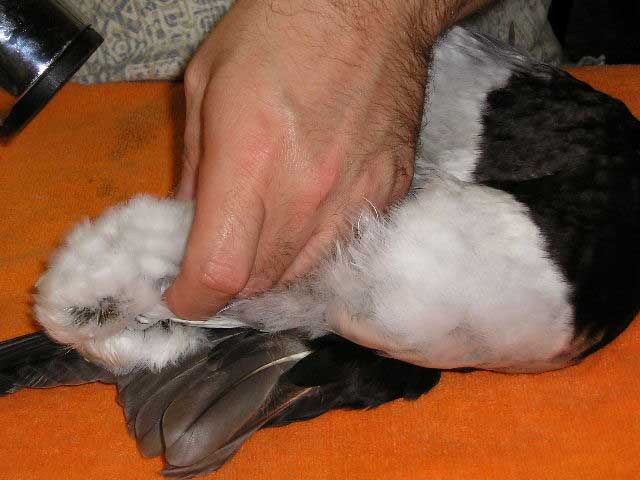
North Atlantic Long tailed Duck.
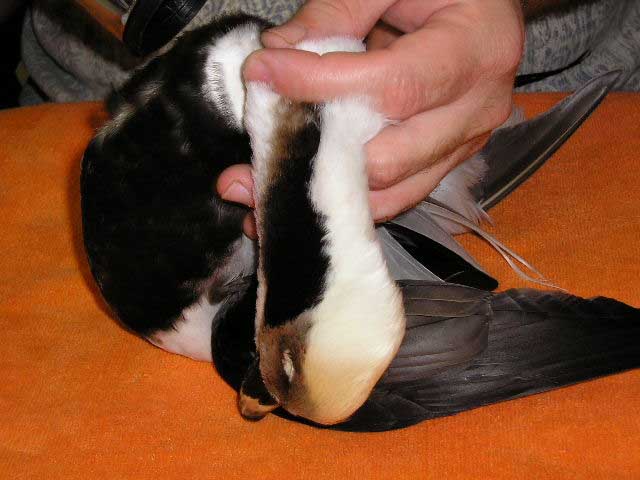
North Atlantic Long tailed Duck.
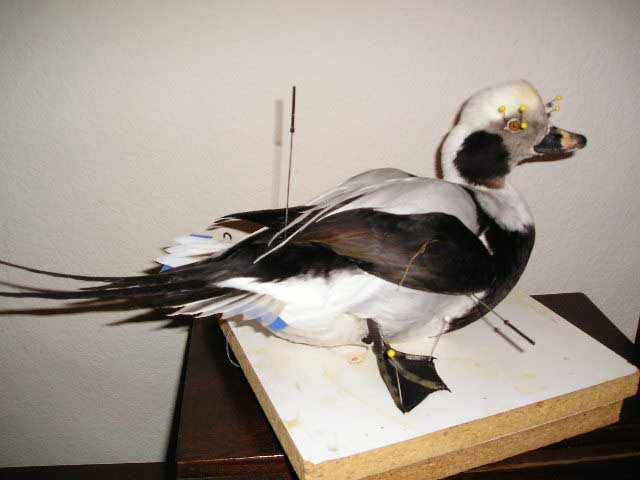
North Atlantic Long tailed Duck.
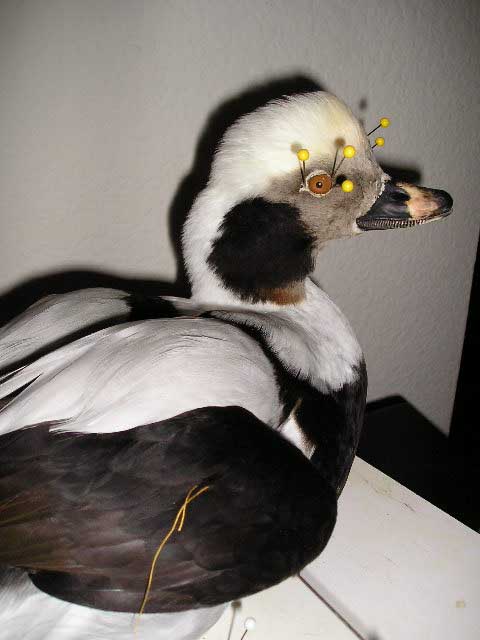
North Atlantic Long tailed Duck.
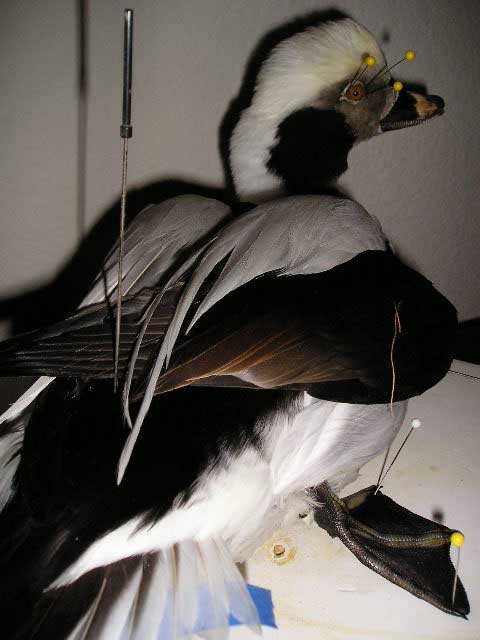
North Atlantic Long tailed Duck. The right hand foot of the bird was initial re-hydrated just using water. The finished foot, complete with leg wire has now been injected with formaldehyde solution. This foot will be allowed to dry and then it will be painted with the correct colours, again using reference imagery as the guide.
ITEMS
WANTED. Please respond via this on-line form HERE
with a description of what you have for sale.
[HOMEPAGE]
Taxidermy Links.
Please double click on the Taxidermy link icon below.
Taxidermy
Links
|


![DSC_5027[1].jpg](DSC_5027[1].jpg)
















